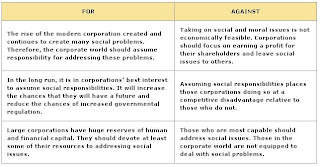Drivers and Dynamics of Illicit Financial Flows from India
The Drivers and Dynamics of Illicit Financial Flows from India: 1948-2008
A November 2010 Report from Global Financial Integrity
A November 2010 Report from Global Financial Integrity
Primary Findings
________________________________________
From 1948 through 2008 India lost a total of $213 billion in illicit financial flows (or illegal capital flight). These illicit financial flows were generally the product of: corruption, bribery and kickbacks, criminal activities, and efforts to shelter wealth from a country’s tax authorities. (51)
Adjusted Estimates: The present value of India’s total illicit financial flows (IFFs) is at least $462 billion. This is based on the short-term U.S. Treasury bill rate as a proxy for the rate of return on assets. (51)
IFF Breakdowns:
1. Total capital flight represents approximately 16.6 percent of India’s GDP as of year-end 2008; (51)
2. Illicit financial flows out of India grew at a rate of 11.5 percent per year while in real terms they grew by 6.4 percent per year; ( 51)
3. India lost $16 billion per year from 2002-2006. (1)
IFF Drivers: High Net-Worth Individuals (HNWIs) and private companies were found to be the primary drivers of illicit flows out of India’s private sector. (ix). India’s underground economy is also a significant driver of illicit financial flows. (53)
IFF Trends: From 1948 through 2008 the Indian private sector shifted away from deposits into developed country banks and towards increased deposits in offshore financial centers (OFCs). The share of OFC deposits increased from 36.4 percent in 1995 to 54.2 percent in 2009. (x).
________________________________________
From 1948 through 2008 India lost a total of $213 billion in illicit financial flows (or illegal capital flight). These illicit financial flows were generally the product of: corruption, bribery and kickbacks, criminal activities, and efforts to shelter wealth from a country’s tax authorities. (51)
Adjusted Estimates: The present value of India’s total illicit financial flows (IFFs) is at least $462 billion. This is based on the short-term U.S. Treasury bill rate as a proxy for the rate of return on assets. (51)
IFF Breakdowns:
1. Total capital flight represents approximately 16.6 percent of India’s GDP as of year-end 2008; (51)
2. Illicit financial flows out of India grew at a rate of 11.5 percent per year while in real terms they grew by 6.4 percent per year; ( 51)
3. India lost $16 billion per year from 2002-2006. (1)
IFF Drivers: High Net-Worth Individuals (HNWIs) and private companies were found to be the primary drivers of illicit flows out of India’s private sector. (ix). India’s underground economy is also a significant driver of illicit financial flows. (53)
IFF Trends: From 1948 through 2008 the Indian private sector shifted away from deposits into developed country banks and towards increased deposits in offshore financial centers (OFCs). The share of OFC deposits increased from 36.4 percent in 1995 to 54.2 percent in 2009. (x).
Analysis
________________________________________
India’s underground economy is closely tied to illicit financial outflows. The total present value of India’s illicit assets held abroad ($462 billion) accounts for approximately 72 percent of India’s underground economy. This means that almost three-quarters of the illicit assets comprising India’s underground economy—which has been estimated to account for 50 percent of India’s GDP (approximately $640 billion at the end of 2008)—ends up outside of the country. (vii, 19)
The finding that only 27.8 percent of India’s illicit assets are held domestically support arguments that the desire to amass wealth illegally without attracting government attention is one of the primary motivations behind the cross-border transfer of illicit capital. (vii, 19)
In the post-reform period of 1991-2008, deregulation and trade liberalization accelerated the outflow of illicit money from the Indian economy. Opportunities for trade mispricing grew and expansion of the global shadow financial system—particularly island tax havens—accommodated the increased outflow of India’s illicit capital flight. (Introduction)
There is a statistical correlation between larger volumes of illicit flows and deteriorating income distribution. (35)
Recommendations
________________________________________
Tax evasion is a major component of the underground economy, which in turn is a primary driver of India’s illicit outflows. Expanding India’s tax base and improving tax collection has high potential to curtail illicit flows.
Illicit financial flows cannot be curtailed without the collaborative effort of both developing and developed countries. Economic reforms key to stemming the outflow of illicit money from India and the developing world in general include:
1. curtail trade mispricing (a widely utilized tax avoidance technique of international businesses);
2. require country-by-country reporting of sales, profits and taxes paid by multinational corporations;
3. require confirmation of beneficial ownership in all banking and securities accounts;
4. require automatic cross-border exchange of tax information on personal and business accounts; and
5. harmonize predicate offenses under anti-money laundering laws across all countries that cooperate on the Financial Action Task Force.

Comments
Post a Comment